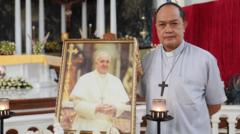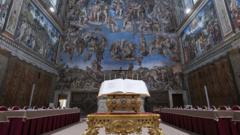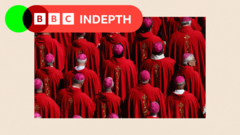In the Sistine Chapel, 133 cardinals take oaths to adhere to the rules governing the papal election process while ensuring the secrecy of the proceedings.
Cardinals Swear Oath as Conclave to Elect New Pope Commences

Cardinals Swear Oath as Conclave to Elect New Pope Commences
The ceremonial beginning of the conclave in Vatican City marks a crucial step in finding the next pontiff.
Inside the iconic Sistine Chapel, the atmosphere is filled with solemnity and purpose as 133 cardinals gather to begin the conclave dedicated to electing the next pope. Adhering to guidelines established by Pope John Paul II in 1996, the most senior cardinal oversees the ceremonial oath taken by all participants. They solemnly pledge to follow the conclave's regulations and commit themselves to the mission of St. Peter, the first pope.
The cardinals affirm their dedication to upholding the spiritual and temporal rights of the Holy See and vow to ensure confidentiality throughout the deliberations and voting process. This promise includes the burning of any notes and paper ballots after each session, a tradition designed to maintain strict secrecy regarding the discussions held within the chapel. However, it is worth noting that insights into the conclave's inner workings occasionally become public through leaks or unpublished diaries of the cardinals.
As each cardinal takes their turn to swear this sacred oath—placing one hand on the Bible and reciting their solemn commitment—once completed, the master of papal liturgical celebrations, Diego Ravelli, will issue the command “extra omnes,” signaling to all non-essential personnel to leave the chapel. Only a select few, including Ravelli, will remain as the cardinals delve into the process of selecting the next leader of the Catholic Church.
This important moment in the Catholic Church's history is being closely watched, as speculation regarding potential successors continues to circulate among Vatican watchers and the global community.





















